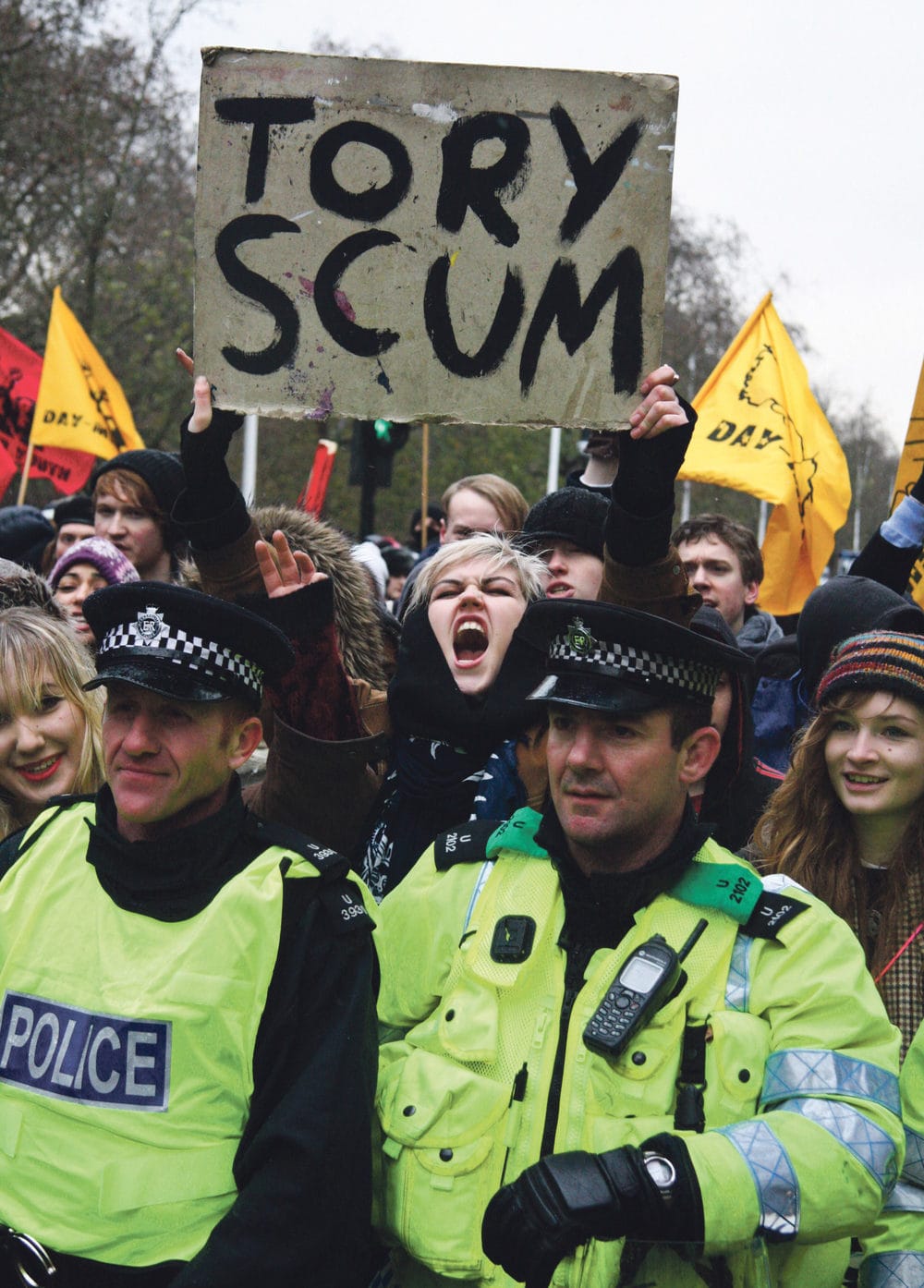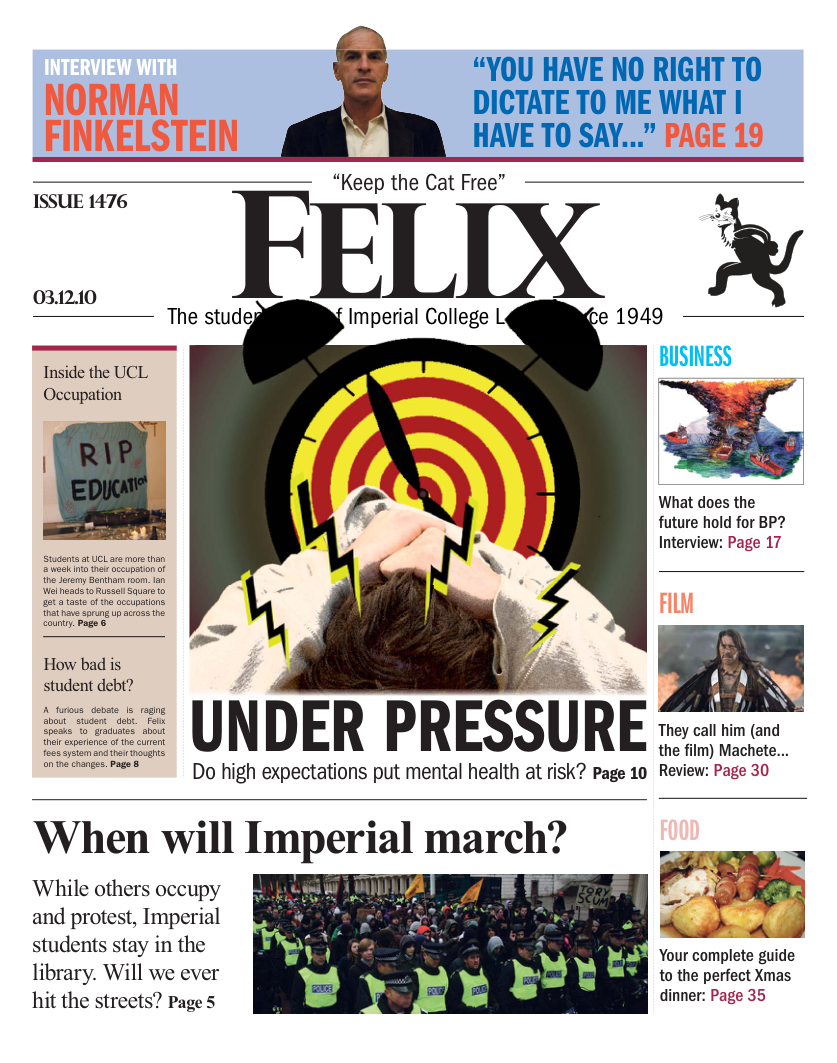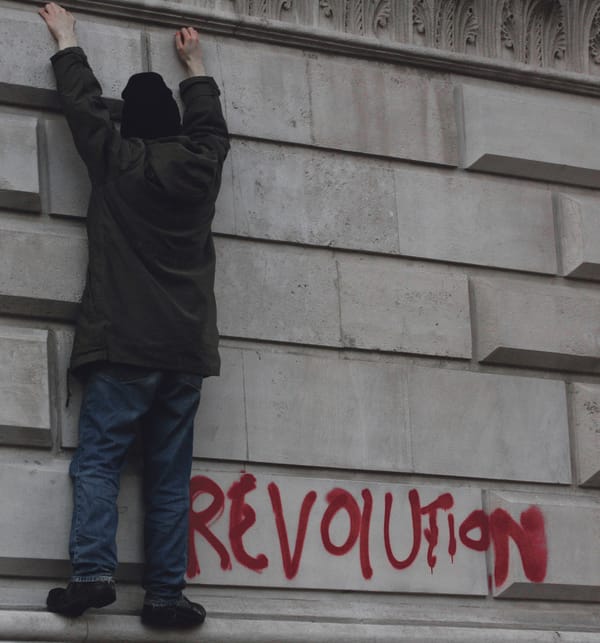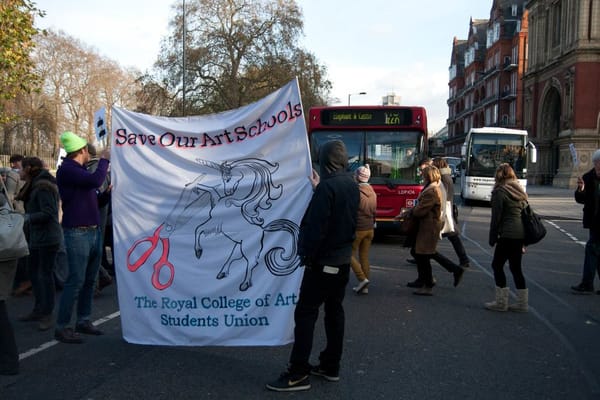Protest Monopoly
Protestors give police the runaround in London

Students hit the streets of London once again this week to rally against the proposed rise in University tuition fees. Traffic was brought to a standstill as thousands of sixth form and university protesters sped through Central London in separate marches, avoiding police attempts to block them for fear of being kettled again.
The scheduled march from Trafalgar Square to Whitehall was supposed to set off at 2pm, accompanied by a police escort. This was not to be, as an early departure caught police off guard and with protesters rapidly approaching Whitehall, along the pre-arranged route, a police cordon was deployed to block their path.
Following last week's Westminster protest where students were kettled for hours without access to food or water, there was a general feeling of panic in the crowd. Seeing their route blocked, protesters spilled out into side streets, forming several smaller marches in an attempt to evade police entrapment.
The crowd detoured past Hyde Park Corner, Piccadilly and Oxford Street in what has been dubbed, "Protest Monopoly". Activities were largely harmless, with protesters waving to startled members of the public as booming reggae swept along the city streets.
As time wore on, many of the previously fragmented groups returned to Trafalgar Square, where several speeches were made from the plinth below Nelsonís Column. With police blocking every road out of the square and the snow falling harder with every passing minute, the crowd slowly dispersed via a controlled exit onto Charing Cross Road. As the evening progressed, there was violence as a small group of protestors refused to leave Trafalgar Square. Coming to the end of a day of peaceful protest, 146 arrests were made and a protestor and a police officer suffered head injuries and was taken to hospital.
The Metropolitan Police have come under fire for their lack of presence at the Milbank riots and later for their kettling tactics used on 24 November. A Judicial Review is currently underway at the High Court in relation to exactly the same tactics that were used in the G20 climate protest. The Met denied any claims that they intended to kettle protesters at this weekís protest and said they formed the cordon to keep people away from an exposed gas line on Whitehall.
President Aaron Porter this week apologised for his "spineless dithering" and ensured that all student protests and activism will be supported by the NUS.
Plans for further protests are underway, with protests being held in London on Sunday 5 and on Thursday 9, the date of the parliament vote on raising tuition fees. A candle-lit vigil is also planned, with 9000 candles (representing the new maximum fee rate) being lit on the eve of the parliament vote.
After the events of the previous three weeks, todayís protest was relatively mild. Although the movement has managed to shed most of its violent elements, it is yet to be seen whether momentum has also been lost. Furthermore, there are worries that University studentsí departure over the Christmas period will cause the campaign to stall.
Will the protesters achieve the goals they have been seeking, or will the police stamp out any further rebellion? Only time can tell.








